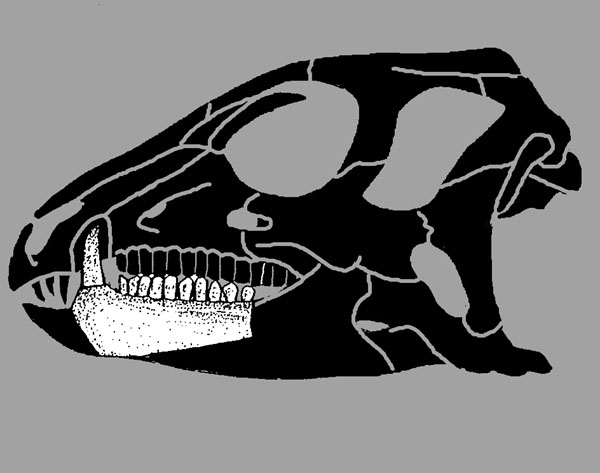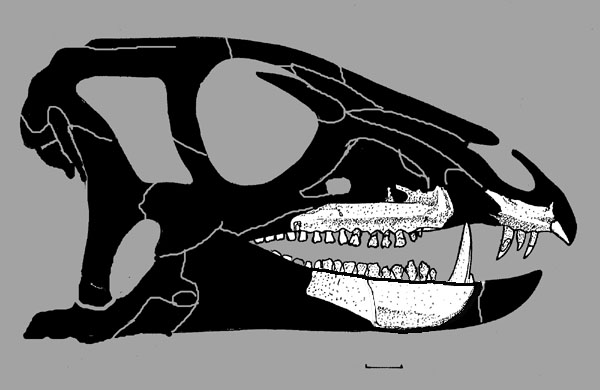
Holotype: SAM 3606
Locality: Paballong, Mount Fletcher District, Transkei (Mt. Fletcher) District, (?)30°26'S, 28°31'E, Eastern Cape Province,
Horizon: Upper Elliot Formation, Stormberg Series.
Biostratigraphy:
Age: Hettangian-Sinemurian Stage, Middle-Upper Lias Epoch, Early Jurassic.
Material: Fragment of mandible with traces of 12 teeth.

Topotype: A. 100: Fragmentary skull and fragmentary dentary.

Referred material:
GOW, 1991
Locality: The farm Bamboeskloof, Lady Grey; 30°45'S, 27°12'E, map reference Floukraal 3027CC, South Africa.
Horizon:
Biostratigraphy:
Age: Early Jurassic.
Material:
BP/1/5253: Left maxilla with teeth.
= Lanasaurus scalpridens GOW, 1975
Etymology: In reference to the chisel-shaped maxillary teeth which this species are very sharp.Holotype: BP 4244
Locality: North-facing upper Redbed exposures in the so-called buck camp in the Golden Gate Highlands National Park, 28°30'S, 28°37'E, Golden Gate district, Free (Orange Free) State, South Africa.
Horizon: Upper Elliot Formation, Stormberg Series.
Biostratigraphy:
Age: Hettangian-Sinemurian Stage, Middle-Upper Lias Epoch, Early Jurassic.
Material: Left maxilla with teeth.